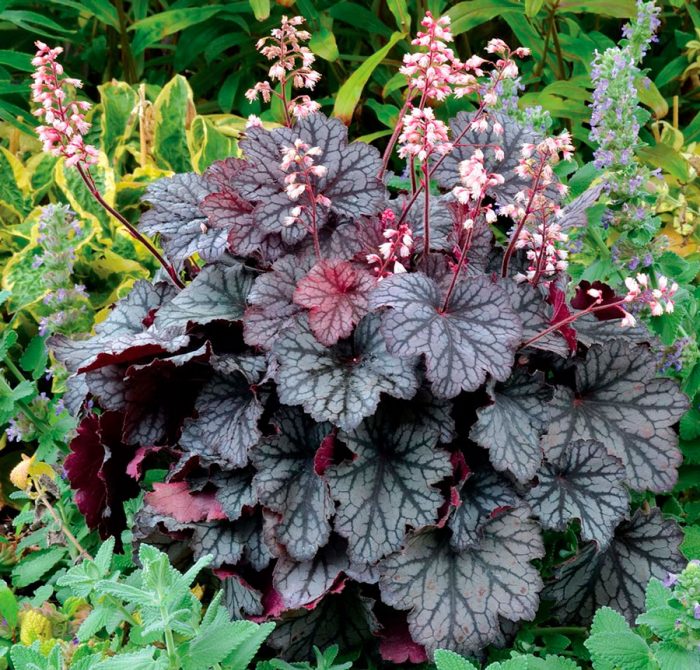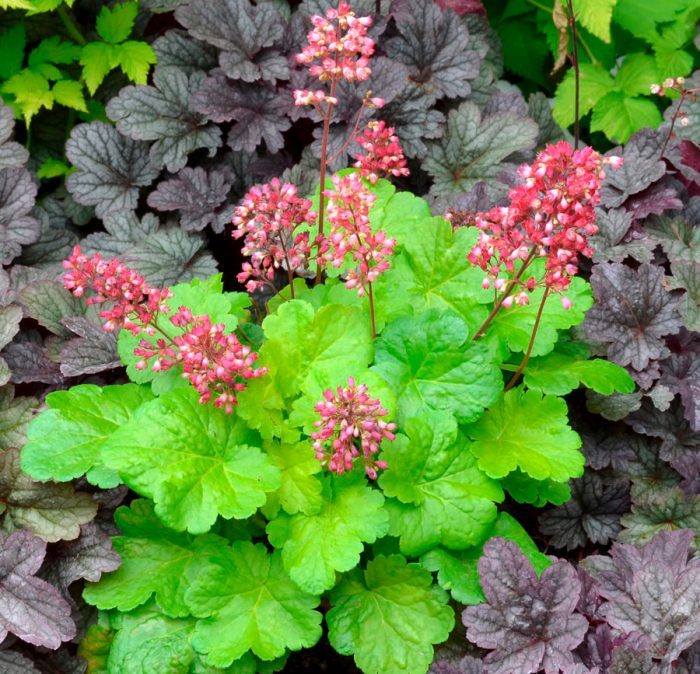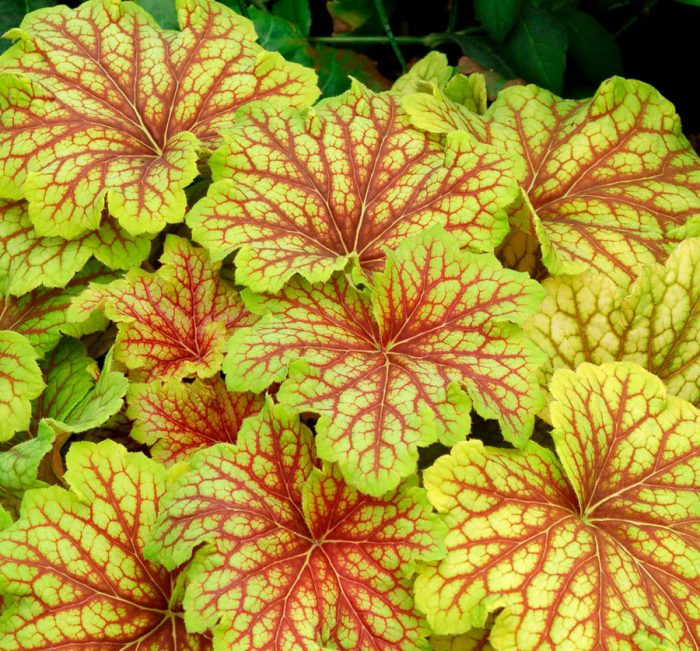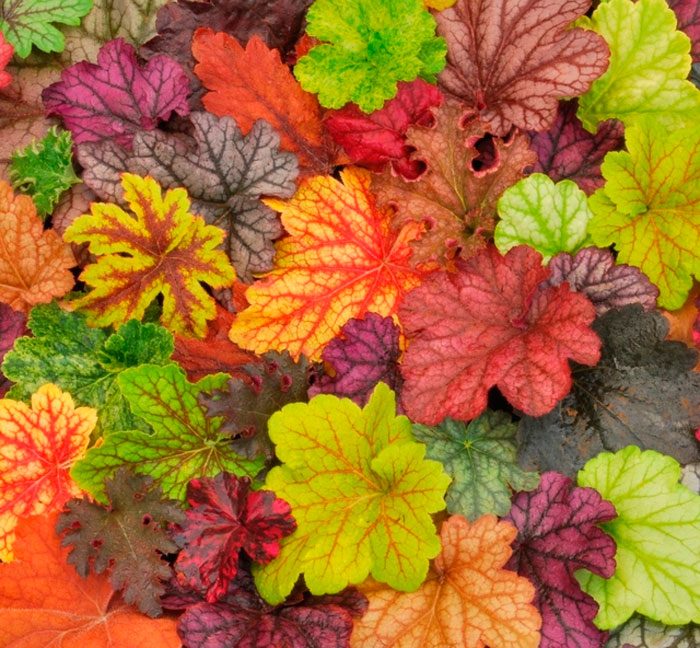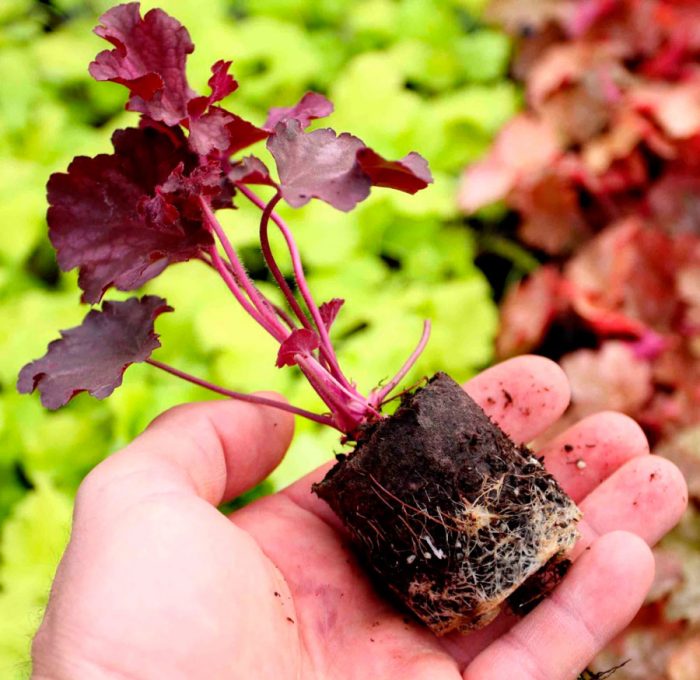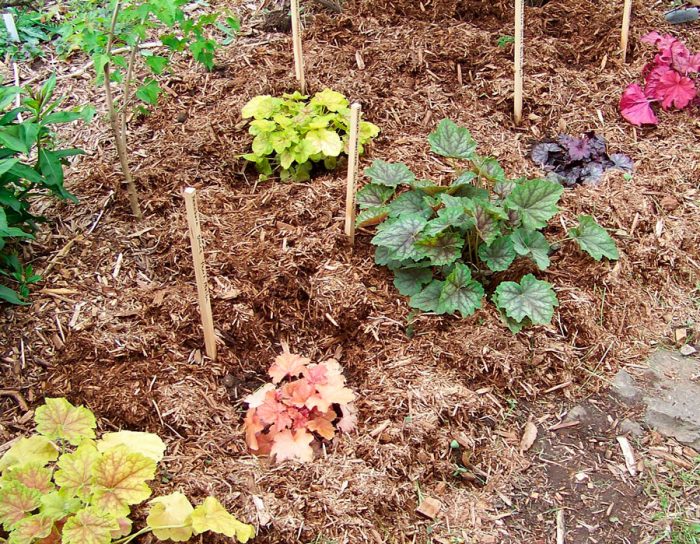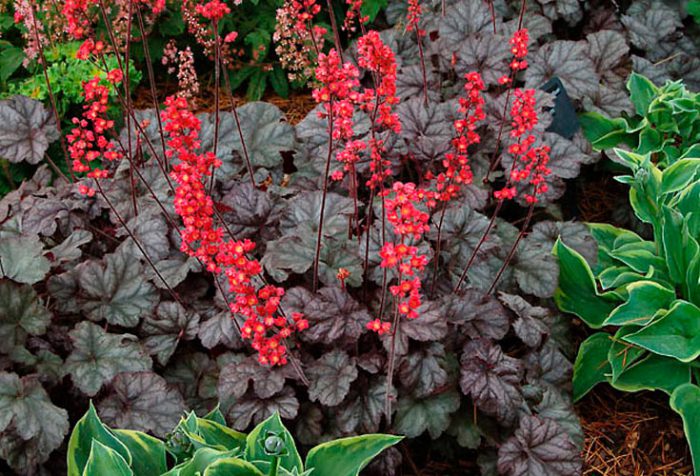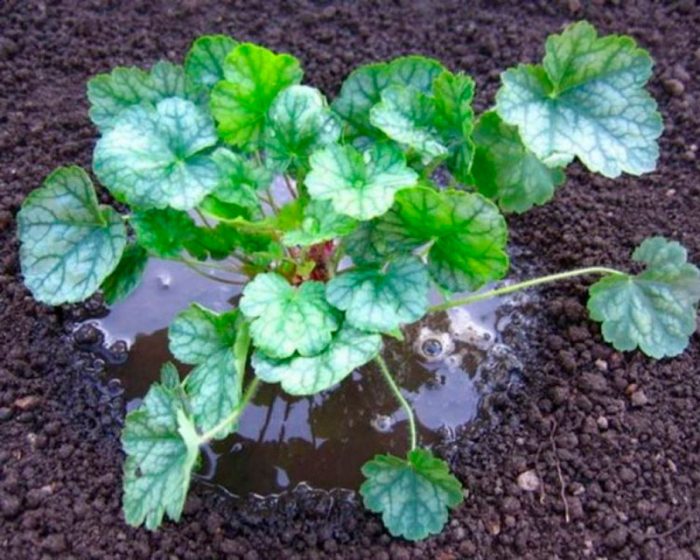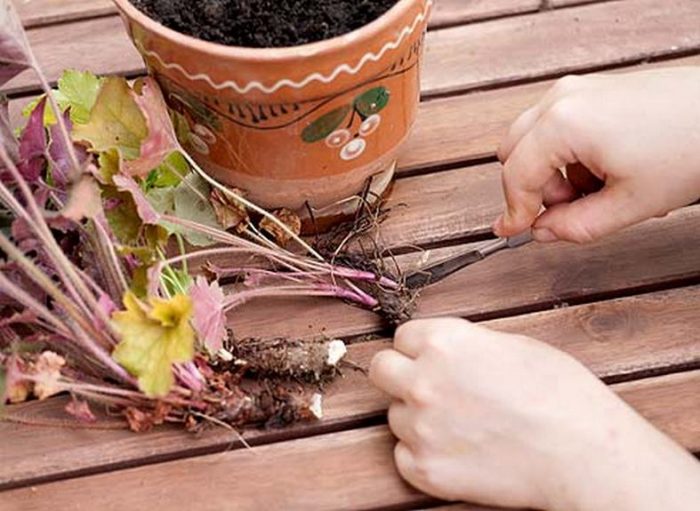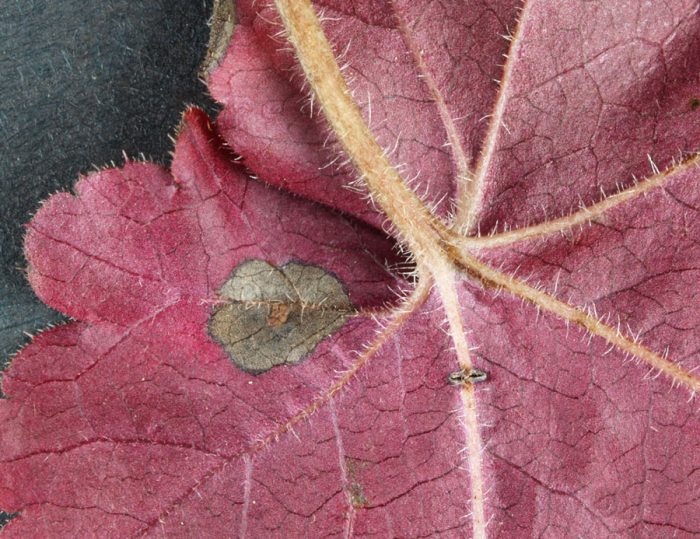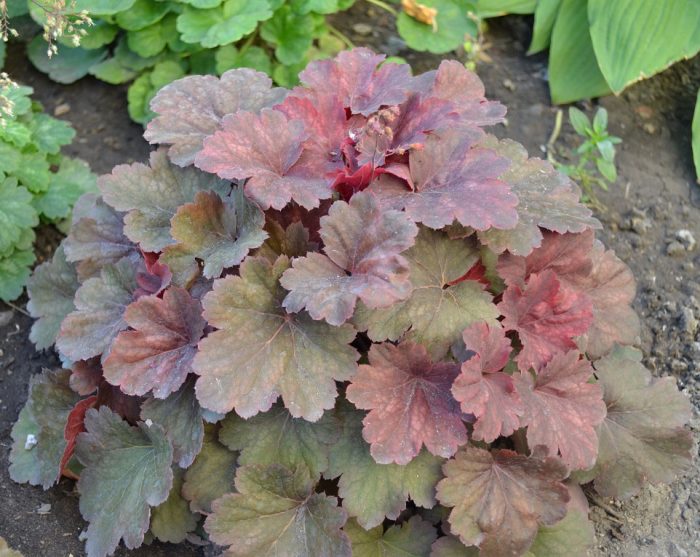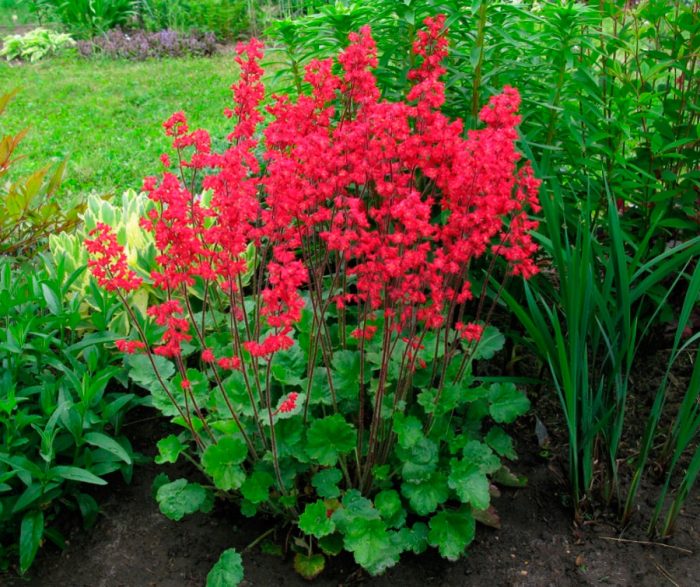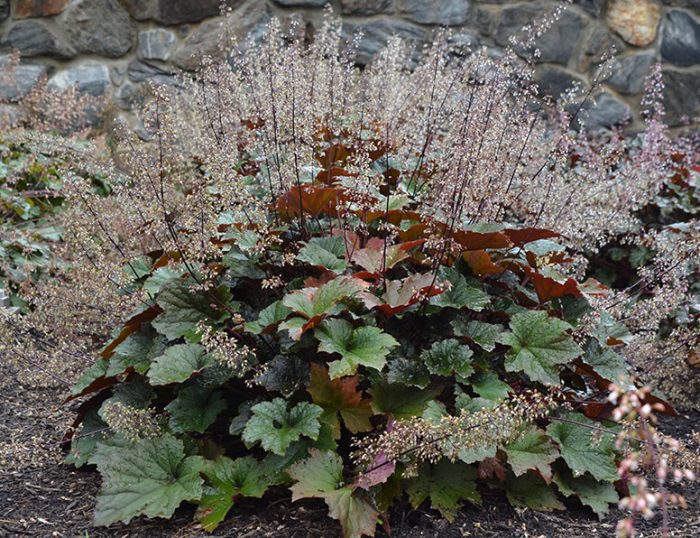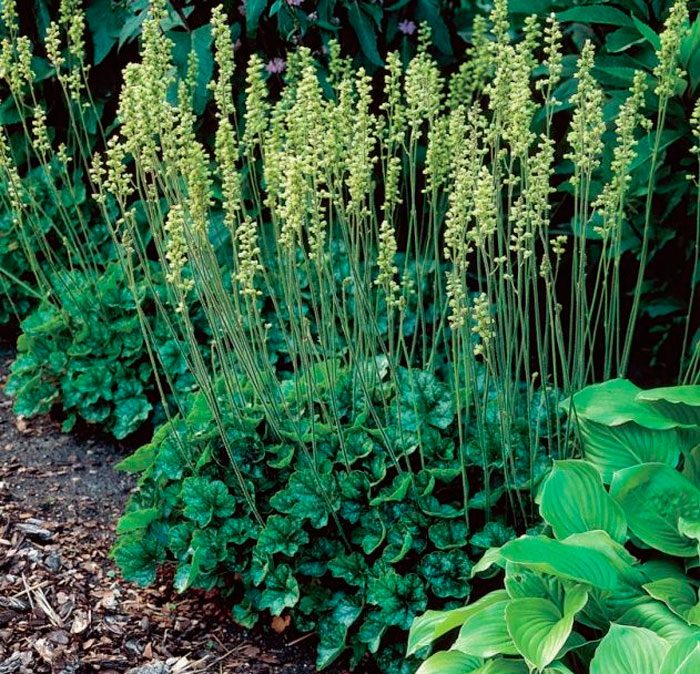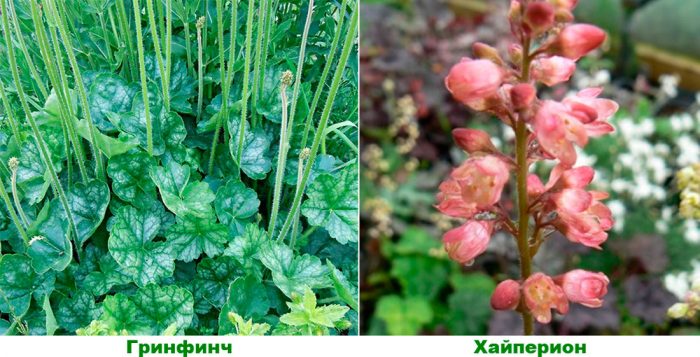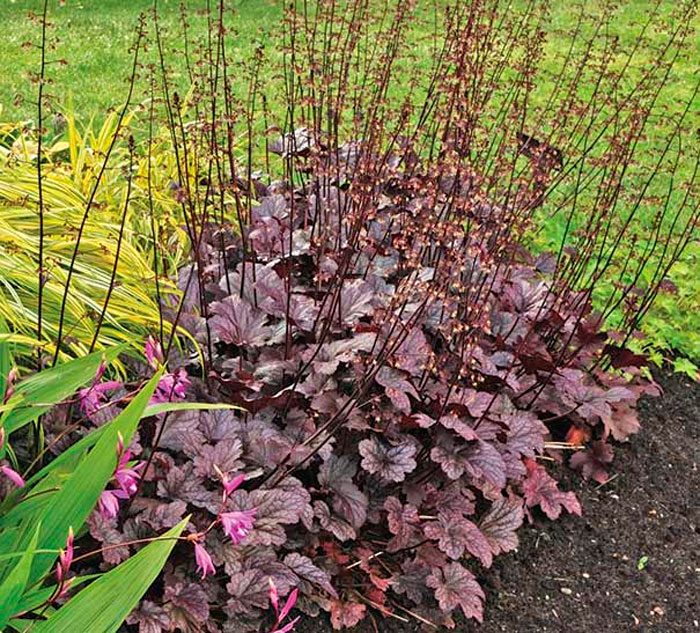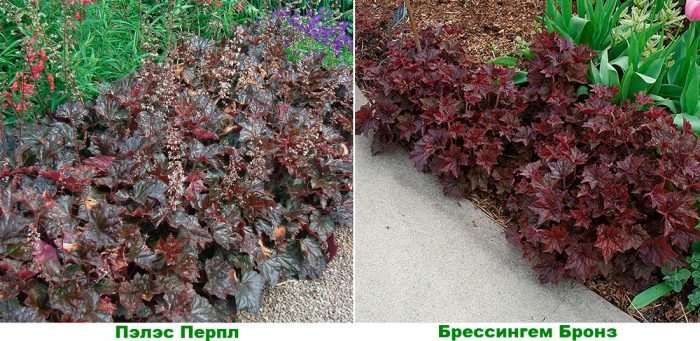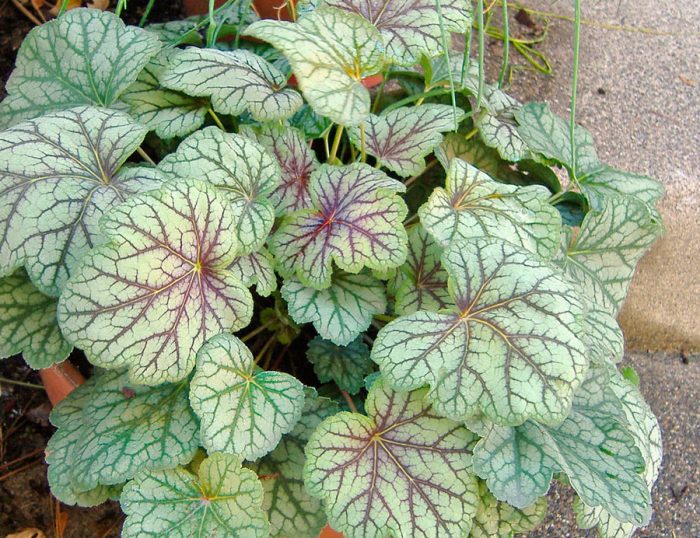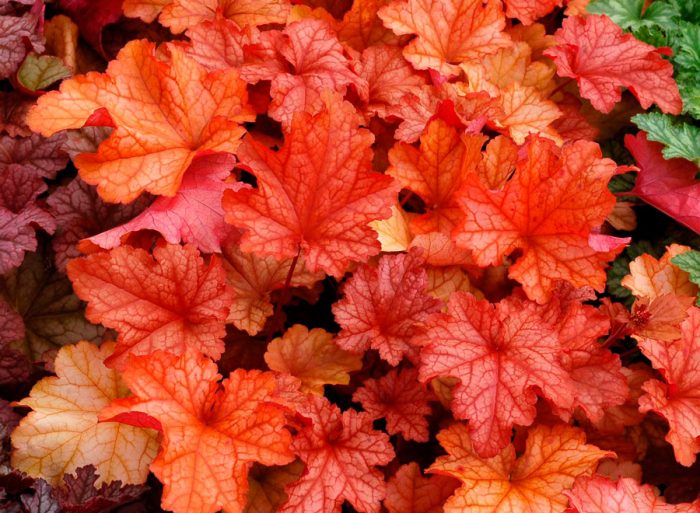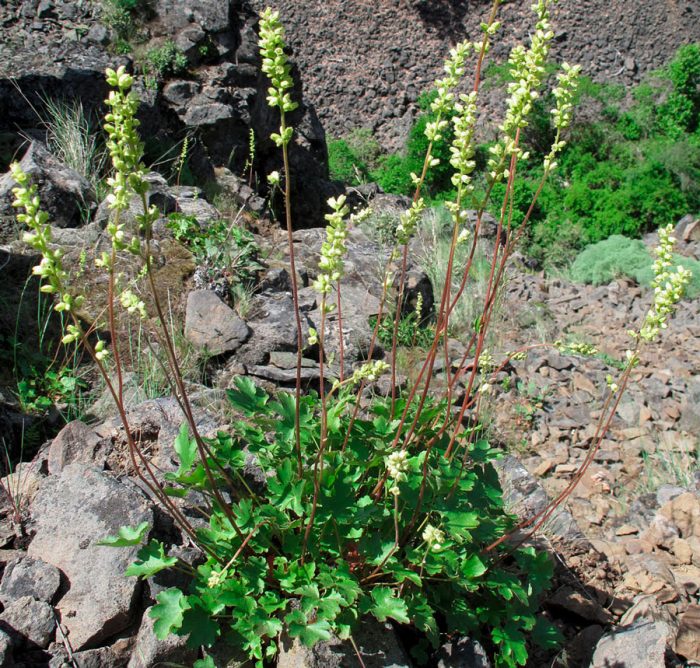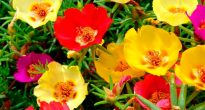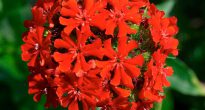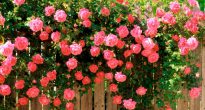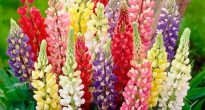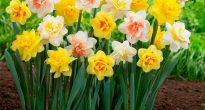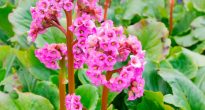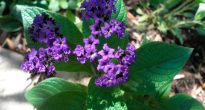The herbaceous rhizome perennial plant Heuchera is a member of the Saxifrag family. Today, its varieties and types are very popular in landscape design. This plant was named after the German physician and botanist Johann Heinrich von Heicher. The homeland of the culture is the rocky regions of North America. The heuchera bush is compact, it reaches a height of about 50 centimeters, and it is appreciated for its spectacular foliage that attracts attention with its sophistication. A distinctive feature of the plant is that during one growing season, its foliage can change its color several times. This culture is distinguished by an incredibly diverse color palette, as well as many options for combinations of color shades, especially for modern variegated varieties.
Content
Brief description of cultivation
- Landing... In the spring, or rather, in March – April.
- Bloom... Observed in June – August.
- Illumination... Grows well in shade or in bright, but diffused light.
- Priming... It should be moisture-absorbing, well-permeable to air and water with a pH of 5.0-6.0.
- Watering... Water the flower systematically as the soil dries out 1 time in two to three days. During a long hot dry period, water the flower twice a day.
- Fertilizer... They begin to feed the Heuchera from the second year of growth, they do this before it blooms and after flowering. To do this, use liquid complex mineral fertilizers in half the dose recommended by the manufacturer.
- Reproduction... Green cuttings, dividing the bush and seed method.
- Harmful insects... Weevils, leaf nematodes, butterfly caterpillars, snails and slugs.
- Diseases... Gray mold, spotting, rust, powdery mildew.
Features of Heuchera
Geykhera is a dense compact bush, which includes leathery long-peaked leaf plates with a serrated edge. The color and shape of the leaves are very diverse.They can be almost black, maroon, pink, yellow, deep red, amber, purple, green and even silver, on their surface there are a variety of veins, patterns, specks and specks. The texture of the leaf plates is corrugated, smooth and curly. The bushes adorn flowers throughout the summer period, and in some cases even until the first frost. Panicle inflorescences consist of small bells of white, red, pink or cream color. The fruit is a box in which there are numerous seeds the size of a poppy seed (1 g contains about 20 thousand seeds).
In landscape design, such a flower has been used for a long time. All varieties are divided by designers into 2 categories: decorative flowering (for example, blood red or red) and decorative leafy (they originated from American heuchera).
Growing features
It is not difficult to grow Heuchera on your site, however, it has several features that a gardener who decides to cultivate it needs to know:
- If you grow ornamental deciduous varieties of Heuchera, then pick off the emerging peduncles from the bushes, they rise above the plants and look extremely untidy. Peduncles are left only if they are going to collect seeds in the autumn.
- In decorative flowering varieties, the cut of peduncles is carried out immediately after the end of flowering.
- The lower foliage flies over time, which negatively affects the decorativeness of the plant. Before the bush begins to bloom, it is removed from the soil and planted in a new deeper hole along with a lump of earth, thanks to this it will be possible to hide the bald stem.
- Young foliage at the beginning of growth is painted in saturated colors and translucent (similar to flower petals), but over time it becomes darker and denser.
- The culture can be combined with daylilies, bergenia, primroses, astilba and ornamental cereals.
Planting Heuchera in open ground
What time to plant
Heuchera is planted in open ground in March – April. This plant belongs to the shade-loving, in this regard, it is recommended to choose a site for it that will be shaded by other crops. The flower should be exposed to diffused sunlight. It is best for him to choose a site located in the western or eastern part of the garden, direct rays of the sun should fall on it only in the morning or evening. If a sunny site was chosen for the geychera, then it will have to be watered systematically and very abundantly. It was noticed that if varieties with bright foliage are grown in a well-lit open area, then its color becomes more saturated and spectacular. It should be noted that varieties with red foliage are recommended to be grown only in sunny areas, otherwise their color will be green in shading.
The soil
The culture is not particularly demanding on the soil, it can grow on any land except acidic, it is best if the pH is 5-6. It can also grow on rocky soil, because in natural conditions it can be found on the rocky shores of the Great Lakes. However, when choosing a site, you need to remember that the looser and more nutritious the soil is, the more effective and thicker the bush will be. Particular attention should be paid to the moisture capacity of the soil, while it must pass water and air well. The plant reacts negatively to stagnant liquid in the root system.


Watch this video on YouTube
Landing rules
Heuchera can be grown from seeds, or you can purchase a ready-made seedling. Sowing seeds is carried out in prepared loose soil, they must be sealed.However, if you are going to grow a crop from seeds, then keep in mind that seedlings cannot retain the varietal characteristics of the parent plant, and all that you can grow is a simple bush with green foliage.
If you do decide to grow a flower from seeds, then it is better to do this through seedlings. Seedlings are grown in a greenhouse box, after which they are planted in open soil, keeping a distance between the bushes of at least 20 centimeters, and they need to be buried in the ground only 30–40 mm. In the flower bed, the soil should be loose, in this case the air can freely penetrate to the root system. After sowing, the first shoots should appear after about 4–6 weeks, it does not matter if the seeds were sown in open soil or in a container.
Geyhera care
It is very easy to grow Heuchera on your site because it needs minimal maintenance.
Top dressing
After planting in the first year of growth, the bush does not need to be fed. Then feeding is carried out every year during the growing season. If you grow decorative leafy varieties, then use complex mineral fertilizers for deciduous plants for feeding, and when growing decorative flowering varieties, use universal fertilizers for flowering plants. Fertilizers are applied to the soil twice a season, namely, before and after flowering, while using half the dosage recommended by the manufacturer.
Watering
Flowers should be watered regularly once every two days immediately after the top layer of the soil dries. Heuchera is one of those plants that tolerate drought much better than stagnant liquid in the root system. But during a long hot and dry period, watering is carried out twice a day (early morning and late evening). The bushes are watered very carefully, water should be poured at the root, avoiding drops from falling on the surface of the foliage, as this can cause burns on it.
To avoid frequent weeding and regular loosening, in spring, after watering, the soil surface is covered with a layer of mulch (peat).
Reproduction of heuchera
After the age of the bush reaches three or four years, a bare middle may appear, since the rosette of the bush in most cases falls apart. If this happened, then the flower should be rejuvenated, for this it is dug up, divided into several parts, with each piece being planted in a new place. The division of the bush is carried out in May or in the first autumn weeks. It should be borne in mind that each section should have two or three sockets. If the roots of the delenka are excessively long, then they are shortened, and if there is rot on them, then all the affected parts are cut out, and the places of the cuts are sprinkled with crushed charcoal.
Delenki are planted in holes 30x30 centimeters in size a little deeper than the parent plant grew. The distance between them must be at least 25 centimeters. When the cuttings are planted, they are watered and covered with a layer of mulch. Rooting takes about 30 days.
The culture can also be propagated by cuttings... Cuttings are harvested in June – July. Cut off the shoots from the parent bush, while making the cut as close as possible to the surface of the soil, but the rhizome should not be touched. Cut them into cuttings, the length of which should be from 40 to 60 mm, their lower cuts are dipped in an agent that stimulates root growth. Remove some of the foliage from them and plant them for rooting in a substrate consisting of sand and peat in a small greenhouse, which should be in a shaded place. Cuttings need regular ventilation, and they also need to be watered in a timely manner. After 20-30 days, the cuttings will take root.
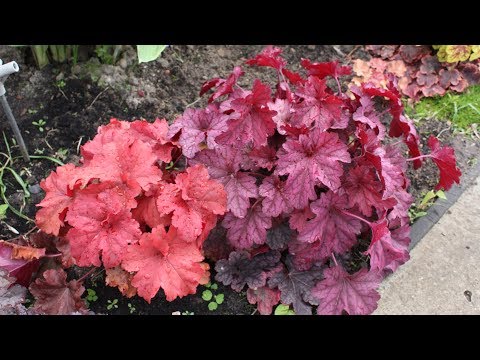

Watch this video on YouTube
Heuchera pests and diseases
The culture is highly resistant to both harmful insects and various diseases. However, it is still rarely affected by rust, spotting, powdery mildew or gray rot.As a rule, this is due to the fact that liquid stagnates regularly in the root system or due to an excessive amount of fertilizer in the soil.
If a whitish bloom appears on the foliage, then the plant is affected by powdery mildew. To cure it, you will need treatment with a fungicidal preparation. If the flower is sick with rust or spotting, then it must be sprayed with a solution of Bordeaux mixture every two weeks.
From harmful insects, slugs, caterpillars, snails, weevils or leaf nematodes can harm the plant. To destroy them, the bush is treated with a special insecticidal preparation.


Watch this video on YouTube
Heuchera after flowering
Most often, Heuchera blooms in the first weeks of summer, and the flowering time is approximately 8 weeks (in some cases longer). Faded bushes do not need any special care. Just remove the stalks, but only if you are not going to harvest the seeds.
Wintering
The culture overwinters quite well in the open field. In autumn, it is impossible to cut off yellowed and dried leaf plates from the bush, as they protect the root system from freezing in winter. The plant needs to be covered for the winter, while it is recommended to use the flown oak foliage as a shelter. With the onset of spring, the shelter is removed, and the old foliage from the bush is carefully cut off with a pruner as close as possible to the surface of the site.
Types and varieties of heuchera with photos and names
The Heuchera genus comprises about 70 different species. Most of them in natural conditions can be found in the woodlands and forests of the mountainous regions of the United States and Mexico. All types of such plants are conventionally divided into forest and mountain ones. Below will be described in detail those types and varieties of heuchera that are most popular with gardeners and landscape designers, as well as those that are most often used by breeders to obtain new varieties.
Heuchera blood-red (Heuchera sanguinea)
This plant is related to mountain species. Its foliage is colored green, and its flowers are deep red. In America, this species is also called the "red bell". The rosette consists of round sheet plates serrated along the edge, unlike other types, they are very dense. Some varieties of this species have a cream or white speck on the foliage surface, due to which it looks more impressive. The height of the peduncles can reach half a meter. This plant is very popular with mid-latitude gardeners because it is highly winter-hardy. The most popular varieties are: Monet, Variegata, Hercules.
Heuchera hairy (Heuchera villosa)
Unlike other species, this plant has a velvety surface of leaf plates, there is also pubescence on the cuttings and peduncles, this is what influenced the choice of the name of the species. The Bronze Wave variety differs from the rest in the largest leaf plates, painted in bronze, in diameter they reach about 20 centimeters. And in the Rachel variety, both peduncles and flowers are painted in a pale pink color.
Heuchera cylindrica
This species also applies to mountainous ones. It has very beautiful foliage, and during flowering it grows long peduncles, on which a huge number of small flowers unfold, from the side it may seem that they seem to float in the air above the plant. This species differs from the others in that it is the largest. Heuchera cylindrical was used by breeders to develop new varieties. The height of the peduncles is about 0.9 meters, large flowers are formed on them on short pedicels, they can have a pink, coral, white or green color. Rounded heart-shaped green leaf plates on the surface have a silver pattern or veins of a contrasting color. The best varieties:
- Greenfinch - the color of the flowers is creamy green;
- Hyperion - during flowering, a compact bush grows flower stalks about half a meter long, on which flowers of a pinkish-red color open.
Heuchera micrantha
Most gardeners are confident that this species is the most decorative of all. The shape of the leaf plate is similar to maple foliage; there are many silvery specks on its surface. Sometimes in natural conditions, representatives of the species with purple foliage are found. The length of the peduncle is about 0.6 meters, a paniculate inflorescence is formed on it, which includes small pinkish-cream flowers with orange anthers. The best varieties:
- Palace Purple - the color of the foliage is dark purple, the variety was recognized as the best perennial plant in 1999;
- Bressingham Bronze - the foliage is colored brownish-bronze.
American Heuchera (Heuchera americana)
Originally view from the shores of the Great Lakes. In America it is also called "mountain geranium". The bush has spectacular foliage, which is collected in an outlet, reaching a height of up to 20 centimeters. Rounded-heart-shaped long-petiolate leaf plates on the underside are painted in lilac-brown color. The length of the peduncles is from 0.5 to 0.6 meters, panicle-shaped inflorescences are formed on them, which include flowers of a greenish-yellow color. Green Spice is one of the most beautiful varieties of this species, its green foliage is decorated with contrasting spots of silver color. During the growing season, the foliage changes its green color to a darker or yellowish tint, the silvery spots become larger over time, and a purple tint appears near the veins.
Heuchera hybrid (Heuchera hybrida)
This species includes all interspecific hybrids of blood-red, small-flowered and American Heuchera. The flowers of such a plant are similar to the flowers of the blood-red heuchera, however, they have a greater size, like the peduncles with foliage. Flowering lasts longer than 8 weeks. The color of the flowers is coral, pink, white or red. As a rule, the foliage is green, but on its surface there is a cream speck and veins of a contrasting color. Such hybrids have only one drawback - due to rain and strong gusts of wind, the peduncle may fall. The best varieties: Cancan, Cappuccino, Beauty Color, Ruby Vale, etc.
Gooseberry Heuchera (Heuchera grossulariifolia)
This species is very resistant to frost. Even in a very frosty winter, it completely retains all its leaf plates. This quality is appreciated by both breeders and gardeners.
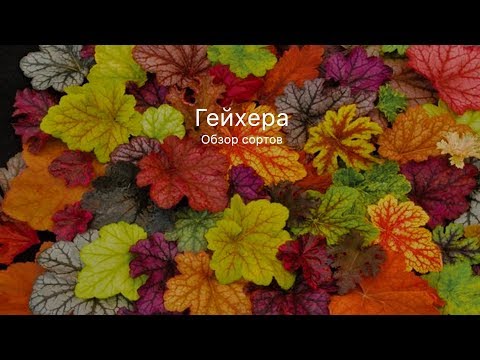

Watch this video on YouTube

